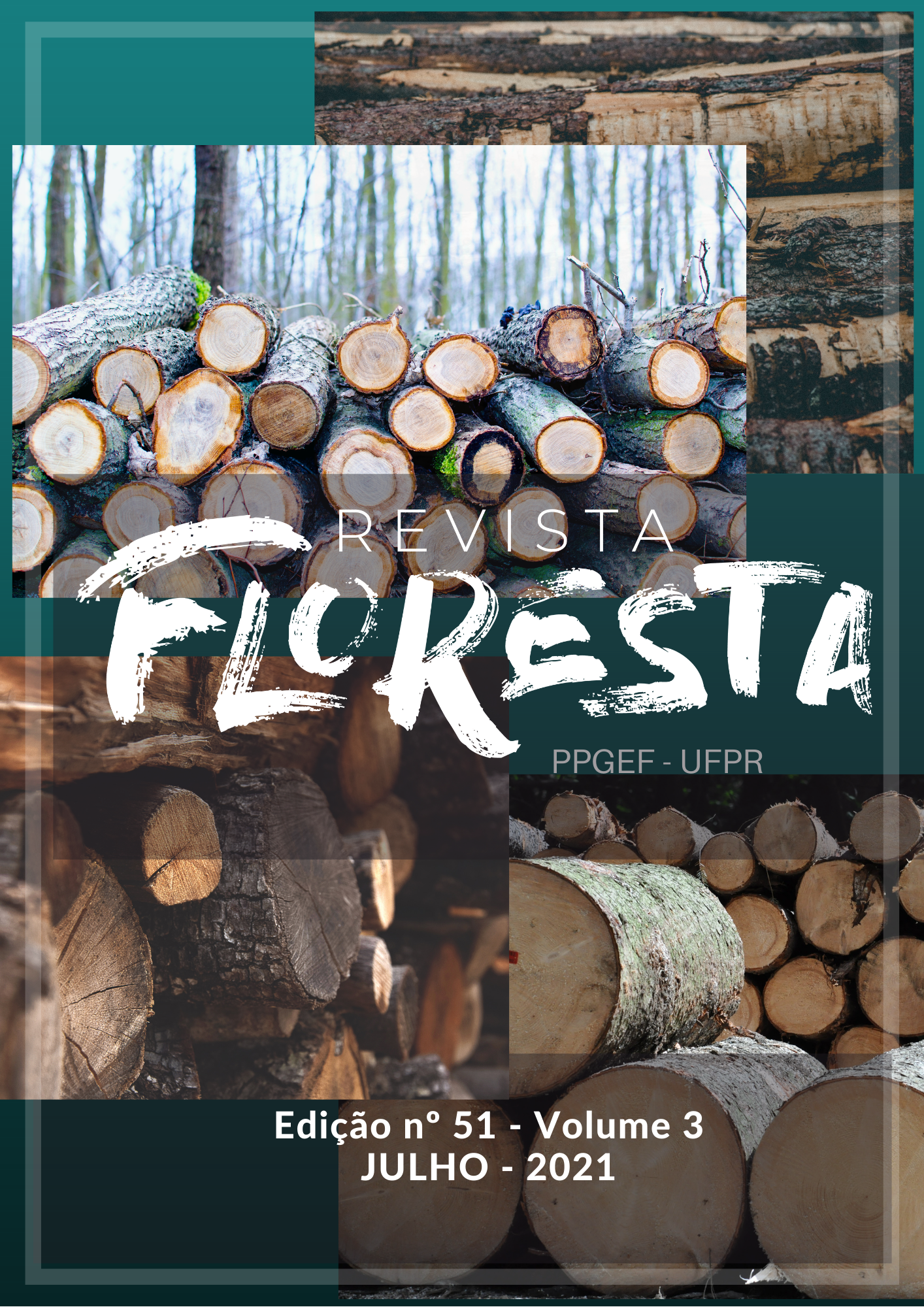SOIL ORGANIC MATTER IN AREAS UNDER YERBA MATE CULTIVATION AND SWINE WASTE APPLICATION
DOI:
https://doi.org/10.5380/rf.v51i3.70954Palavras-chave:
Organic soil carbon, fractionations, intensive cultivation, Ilex paraguariensisResumo
Carbon and nitrogen contents, as well as their chemical fractions (humic acid - HAF, fulvic acid - FAF, humin - HUM) and particle-size fractions (particulate organic carbon - POC, mineral-associated organic carbon - MAOC) of organic matter were evaluated in areas cultivated with yerba mate (Ilex paraguariensis) with 35 (E35) and 45 (E45) consecutive years of cultivation, in addition to a native forest area (NF), taken as reference. The soils of the study area were classified as Cambissolo Háplico (Inceptisol). Soil samples were collected at depths of 0.0-0.05, 0.05-0.10, 0.10-0.20 and 0.20-0.40 cm. A completely randomized design in split plots (3 areas and 4 depths) with 4 replicates was used. The E45 area, due to the longer cultivation time and the addition of organic fertilizer, had higher TOC, N and POC contents in comparison to the E35 area, with similar values of these attributes being observed in the forest area at some depths. The most stable carbon fractions (MAOC and HUM) did not vary between cultivated areas (E35 and E45); however, there were reductions of 25 and 14% (HUM 0-5 cm) and 12 and 21% (MAOC 5-10 cm) in these fractions, respectively, in comparison to the native forest. There was no difference between the evaluated areas for FAF, but HAF values were higher in the native forest area than in the cultivated areas.
Downloads
Publicado
Como Citar
Edição
Seção
Licença
Direitos Autorais para artigos publicados nesta revista são do autor, com direitos de primeira publicação para a revista. Em virtude da aparecerem nesta revista de acesso público, os artigos são de uso gratuito, com atribuições próprias, em aplicações educacionais e não-comerciais.A revista, seguindo a recomendações do movimento Acesso Aberto, proporciona acesso publico a todo o seu conteudo, seguindo o principio de que tornar gratuito o acesso a pesquisas gera um maior intrcambio global de conhecimento.
Conteúdos do periódico licenciados sob uma CC BY-NC-SA 4.0



